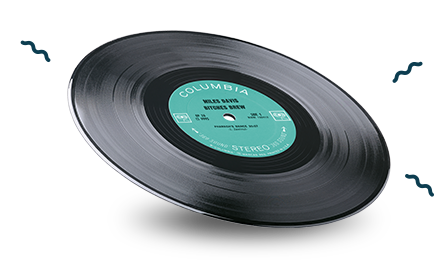Side 2Track 1 Anti-skating test; 315Hz amplitude sweep to +12dbu (Lateral)
Signal should remain clean in both channels up to the highest level, both audibly and as viewed on an oscilloscope. In case of distortion, increase anti-skating force or decrease anti-skate until breakup occurs equally in both channels. The left channel information is inscribed on the inner groove wall, the right channel information, on the outer groove wall. Because of the offset angle of a pivoted tonearm, a constantly varying vector force biases the arm towards the center of the record causing the stylus to lose contact with the outer (i.e. right channel) groove wall. Both linear and modulated groove velocity, tracking force, stylus profile, and vinyl composition are contributing factors. The anti skating force attempts to ameliorate this by applying an opposing similar force.
It is also accepted that the overall force vector increases as the tonearm approaches closer to the spindle or end of the record.
Track 2 Pink noise lateralTrack 3 Pink noise verticalUsed for cartridge “demagnetizing”
You can also use this track to loosen up the cantilever’s suspension to help break in a new cartridge. Play these tracks five to ten times after every 300 hours of normal LP playback.
Track 4 1kHz @
reference level, verticalThis out-of-phase signal should cancel to nothing when summed to mono.
Any signals still present are distortion artifacts, lack of channel balance, or timing (phase) anomalies. This test can be a second confirmation of anti-skate adjustment.
Track 5 1kHz to
10Hz sweep @ -20 below
reference level, vertical
Resonance anomalies in the tonearm / cartridge interface will show up as amplitude peaks and dips as the frequency sweeps down.
Once again, by listening in ‘Mono’ it is easier to hear the distortion artifacts.
Track 6 Silent groove for bearing rumble and table isolationDuring playback of this track, nothing should be transmitted from the turntable to the speakers. Replay the track and gently tap on the rack or base that the turntable is resting on. There should be little or no thump transferred to the speakers. This track will help you experiment with turntable isolation methods and products to be able to get the most out of your playback system. You may want to use a closed or sealed headphone for best listening results, or a stethoscope on the plinth.





 Vattensporter
Vattensporter




 se
se








